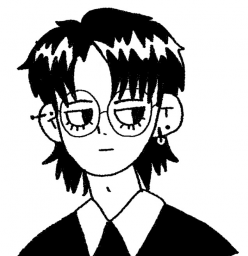
Reflection
Recently, the newest software update on my phone added new emojis to my keyboard. This was really helpful to describe more “tangible” ideas in the TV show, such as the characters and the setting of the story. I found it challenging to describe the more abstract concepts, such as the translation of the title, as it was an attribute of the character in the story in a non-English language. I would put emojis into smaller clusters as a “constituent” to show that they belonged together as a unit, and a space in between the next cluster.
The way that I clustered emojis together to express a concept reminds me of Blissymbols, an ideographic writing system with basic symbols that could be composed together to generate new symbols to represent different concepts. The creator Charles K. Bliss developed this system during his refugee in the Shanghai Ghetto during exile as a Jew during 1942-1949. He was inspired by the logographic nature of Chinese characters, which he learned during his time there.
Here are some basic symbols and what they look like:

There are ways to compound the symbols to form more complex words:

The word  “friend” is represented by:
“friend” is represented by:
 person
person
 feeling
feeling
 positive (
positive ( plus +
plus +  intensity)
intensity)
Apparently, after reading more about emojis and how it works in Unicode, one can modify the emojis to join them as well!
With a zero-width-joiner (a non-printing character used in computerized typesetting), one can compound multiple emojis that behaves like a single unique emoji character.
An example taken from the Wikipedia entry of “joining emojis“:

Originally, Blissymbols was created for as a universal language for speakers of different languages could communicate with each other. It wasn’t until the 1970s that it gradually became a communication aid for people with limited or no ability to use spoken or written languages.
In regards to emojis, a primary function of emojis is to fill in the gaps of emotional cues that we would otherwise miss in typed and written conversations.
However, I think one main distinction between Blissymbols and Emojis is that the former is an attempt at abstraction of language where one can rely only on the symbols to convey meaning, whereas the latter is more a synthesis between language and symbols to create meaning.
Kress (2005) differentiated that words are founded on order, and image-representations are founded on depictions, with the main crucial difference of words being highly “conventionalized” entities, such that they will always be general and vague, nearly empty of meaning, which need to be filled with the reader’s meaning.
In terms of images and its depictions, Kress states:
With depiction and with images the situation is different: that which I wish to depict I can depict, at the moment at any rate. I can draw whatever I like whenever I like to draw it. Unlike words, depictions are full of meaning; they are always specific. So on the one hand there is a finite stock of words—vague, general, nearly empty of meaning; on the other hand there is an infinitely large potential of depictions—precise, specific, and full of meaning.
I think his differentiation reveals a big reason why emojis are useful and important when it comes to interpreting and meaning making in text messages, for example.
A message can be interpreted differently from the sender’s intention vs the receiver’s perception. A message with an emoji can however provide more information with the depiction of the symbol, which in turn grounds the message to a specific meaning.
Both Blissymbols and Emojis are concretely grounded in their visual medium, as one can really only engage with these two systems through reading and writing as part of the trend to renegotiate the relationship between arbitrary signs and picture elements in communication (Bolter, 2001).
References
Blissymbols [Online image]. https://omniglot.com/writing/blissymbolics.htm
Blissymbols (n.d.) Wikipedia. Retrieved June 21, 2022 from https://en.wikipedia.org/wiki/Blissymbols
Emojis (n.d.) Wikipedia. Retrieved June 21, 2022 from https://en.wikipedia.org/wiki/Emoji
Bolter, J. D. (2001). Chapter 4. in Writing space: Computers, hypertext, and the remediation of print (2nd ed.). Mahwah, N.J: Lawrence Erlbaum Associates. doi:10.4324/9781410600110
Kress (2005), Gains and losses: New forms of texts, knowledge, and learning. Computers and Composition, Vol. 2(1), 5-22.
